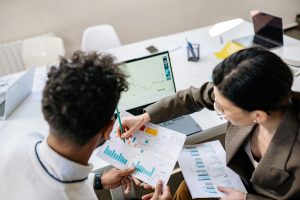Jeremiah Green

This textbook reflects the challenging position for many accountants who simultaneously must have expertise in how businesses function, how transactions are recorded and reported, and how to use information to make decisions. These challenges have increased as the volume and complexity of business data have grown.
A prime example of the challenging position is the addition of data analytics to the CPA exam (Evolving CPA). In order to compete with other skilled employees and to provide valuable information that can be used for monitoring companies and making decisions, an accountant must be part bookkeeper, part business process specialist, and now part data scientist (Future of accounting article link). Most accounting training does not equip accountants to become data scientists. Data analytics seems to have become a term separate from data science that recognizes a degree of data skills that do not rise to the level of a data specialist. This separation may be useful because data science or related terms like statistics, econometrics, or computer science are vast fields that cannot be summarized in a single class or a few classes. Despite the services provided by specialists, accountants are often expected to work with or perform on their own many tasks that require data analysis and interpretation skills.
The purpose of this textbook is to provide a non-technical survey of data tasks that are relevant for accountants. Throughout the textbook additional resources are provided should the accountant want to venture into more technical or different data science tools and methods.
This textbook uses R as the statistical software. There are several reasons for this. First, specialized software can limit flexibility in how it can be customized for different tasks. R is a general purpose tool that can be used for a wide variety of applications and can be easily customized for varying tasks. Second, R is open source with a large community. This makes R adapt quickly to new advances and provides a wealth of resources for learning and troubleshooting. Third, compared with alternatives, R has some highly flexible and intuitive tools that make data analysis relatively easy to apply and to learn.
This textbook focuses first on general data analysis concepts and critical thinking. The secondary focus is using R as a tool for data analysis. Along the way, applications for accountants also demonstrate the concepts and the tool.
I hope you enjoy developing new ways of thinking and new tools that you can use. I also hope you become fascinated with data oriented exploration and decision making.
Media Attributions
- pexels-yankrukov-7693745

